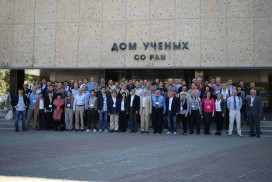School for Young Scientists will be organized during the Symposium. Several top-ranking scientists (see a preliminary list below) will deliver invited lectures on “hot” topics of modern laser physics and applications.
The School participation fee is included into the Symposium’s one. Registration to the School will be organized during registration to the Symposium. A timetable of the lectures will be known later.
Location: Small Hall of the House of Scientists (Symposium’s venue) and the Institute of Laser Physics SB RAS.
All the Symposium attendees as well as students from Novosibirsk universities are welcome!
INVITED LECTURERS
(the list is preliminary)
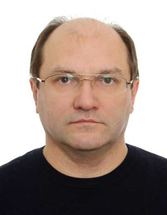 |
Prof. Sergey Babin – vice-director of the Institute of Automation and Electrometry SB RAS, Novosibirsk.
Prof. Babin is a corresponding member of Russian Academy of Sciences. He is also a member of OSA, IEEE and SPIE societies. Prof. Babin is a chief editor of Applied Photonics Journal. |
Research interests
Prof. Sergey Babin is a well-known and recognized researcher in the field of fiber optics, fiber lasers and applications. The main scientific achievements include the development in collaboration with colleagues from MPE (Garching, Germany) of a first powerful laser guide star source in 2000, and the longest fiber laser (up to 300 km) with colleagues from Aston University in 2009. He and his team has demonstrated random Raman fiber lasers with record parameters (efficiency, polarization extinction ratio, tuning, etc.). The problems of spectrum broadening in fiber lasers and its efficient conversion into visible range have been also solved. Fundamental limitations have been found and femtosecond pulses with maximum energy in an all-fiber oscillator have been demonstrated. Femtosecond technology of writing gratings through the fiber coating with unique sensing characteristics has been developed. Laser and sensor systems for industrial applications (communications, biomedicine, material processing, oil and gas, infrastructure and power engineering) have been proposed and realized.
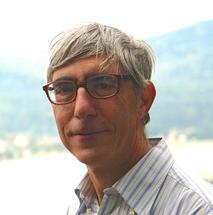 |
Prof. Nicolò Beverini – Department of Physics, University of Pisa, Pisa, Italy – Senior Member of the Optical Society of America. |
Prof. Nicolò Beverini is the leader of the Laboratory of Frequency Measurements and Atomic Spectroscopy in the Department of Physics of the Pisa University. His scientific activity is principally in the field of experimental Atomic Laser Spectroscopy and Frequency measurements, and in the application of laser technologies to frequency standards, to geophysical instrumentation, and to fibre optical sensors. In these fields, he was unit manager and/or principal investigator in many National or European projects.
Prof. Beverini strictly collaborated with researchers of other Institutions. The activity on frequency metrology was carried ahead in a long term collaboration with the Italian Institute of Metrology in Turin. In this frame he realized the first demonstration of laser cooling in Calcium atoms, and studied its application to the microwave frequency standard. It is also worthy of citation the cooperation with the Institute of Laser of RAS in Novosibirsk has brought to the first realization in Italy at the beginning of 2000’s of a fs laser for generating a frequency comb, that was applied to molecular spectroscopy and frequency measurement in the THz region, and later, in the visible, in collaboration with LENS group in Florence working on cold Sr optical atomic clocks.
He is also active in the field of applied physics (laser spectroscopy methods for plasma diagnostic; fiber optic laser sensors, as marine hydrophones or as stress sensors; instrumentation for geophysics, like atomic magnetometer and gravity gradiometers).
He is presently involved with the National Institute of Nuclear Physics (INFN) in the GINGER project, with the aim of build an array of laser gyroscopes with a very large sensitivity to test general relativity effect on the Earth rotation rate.
Presently, prof. Beverini’s teaching charges are:
- Physics, to the undergraduate students in Earth Science,
- Atomic Physics for MSc in Physics
- Instrumentation for Geophysics for MSc in Applied and Exploration Geophysics In the last years he covered the rule of President of the MSc course in Applied and Exploration Geophysics.
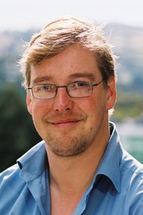 |
Prof. David Hutchinson – University of Otago, director of the national Centre of Research Excellence (Dodd Walls Centre), New Zealand.
Prof. Hutchinson works in the University of Otago’s Department of Physics. He teaches at all levels from physics for first year health science through to fourth year, and supervises graduate students at both the Masters and PhD levels. He is also dedicated to educational outreach, while providing strong support for industry engagement and leadership of research activities across the Centre’s five member universities. He’s initiated and led a successful public engagement partnership with the Otago Museum as well as with other museums, schools and agencies throughout New Zealand. |
Prof. Hutchinson holds a BSc and PhD from the University of Exeter in the UK, plus a recently acquired PGDip(Arts) in Philosophy from Otago. Before moving to New Zealand, he worked in Ireland, Canada and at the University of Oxford. Prof. Hutchinson is a Fellow and the President of the New Zealand Institute of Physics, a Fellow of the Institute of Physics (UK) and a member of the Institute of Directors of New Zealand.
Research interests
Theoretical research in the broad area of quantum physics including:
- Disorder in ultracold atomic gases
- Path-integral quantum Monte Carlo studies of ultra-cold gases
- Finite-temperature theories of ultra-cold gases
- Connections between quantum physics and number theory
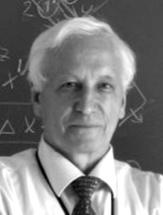 |
Professor Boris A. Knyazev – Head of the Laboratory of Applied Electrodynamics at the Novosibirsk State University and Principal Researcher at the Budker Institute of Nuclear Physics SB RAS. He received the Ph.D. degree in Quantum Electronics in 1973 and Doctor in Phys&Math degree in Plasma Physics from the Budker Institute of Nuclear Physics in 1991. From 1990 till 1999 he served as the chair of the General Physics Department at the Novosibirsk State University. Since 1992, he has held a number of guest fellowship and professorship at Forschungszentrum Karlstuhe (Germany), Cornell University (USA), and Korean Atomic Energy Research Institute (South Korea). Prof. Knyazev is the author of 5 books, 11 patents, 150 articles, and 200 conference presentations. |
Research interests:
- Optics, spectroscopy, lasers
- Terahertz radiation
- Plasma physics
- High-power electron and ion beams
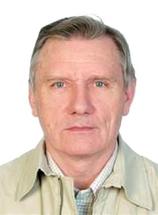 |
Prof. Valentin Rudenko – Head of the Department of Gravitational Measurements, P.K. Sternberg Astronomical Institute, M.V. Lomonosov Moscow State University, Moscow, Russia. Prof. Rudenko is also a director of the ORGAN project of the Institute for Nuclear Research of the Russian Academy of Sciences. Scope of his scientific interests covers such fields of modern physics as gravity, astrophysics, radio and laser physics. He is well-known specialist in the direction of gravitational-waves detectors and interferometers. He is an author of many books, several hundreds of research papers, including scientific and popular ones. |
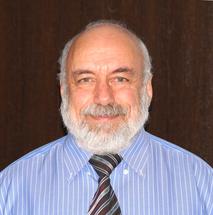 |
Prof. Boris Vainer – Principal Research Scientist of the Rzhanov Institute of Semiconductor Physics SB RAS and professor of the Novosibirsk State University, Novosibirsk, Russia. |
His primary research areas are focal plane array-based infrared thermography and thermal imaging, including various applications of these methods to physics, chemistry, engineering, electronics, semiconductor technology, industry, medicine, biology, human and animal physiology, etc. Boris Vainer is the author and co-author of 8 scientific books (3 of them are published outside Russia) and more than 160 other publications. More than 120 publications are devoted to infrared thermography.
As an invited professor, Boris Vainer gave in 2014 a series of lectures in Aston Institute of Photonic Technologies (Birmingham), Anglia Raskin University, University of Edinburgh, University of Dundee, BP Lubricants under the Royal Academy of Engineering (UK) “Distinguished Visiting Fellowship” scheme.
Boris Vainer is an Editorial Board Member of the Translational Biomedicine journal (Insight Medical Publishing), Austin Emergency Medicine journal (Austin Publications), The Open Biomedical Engineering Journal (Bentham Science Publishers) and a reviewer of 12 international scientific journals.
During last 26 years, Boris Vainer teaches physics at the Novosibirsk State University. He is the author of 3 original physics textbooks and some more educational materials. He is a Winner in the All-Russian Competition of Teachers (in 2009 and 2015).
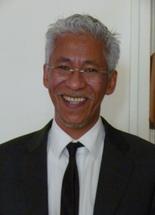 |
Prof. Jean-Jacques Zondy – Nazarbaev University, School of Science and Technology (SST), Astana, Kazakhstan. He is also a Senior Member of the Optical Society of America. Prof. J.-J. Zondy joined Nazarbaev University (NU) in 2015 as a senior faculty member of the Physics Department of the School of Science and Technology, where he teaches physics at both the undergraduate and graduate level. In 2015 he set up the first lecture on Lasers and Photonics for the newly created MSc Physics curriculum of SST. |
Prior to his new appointment at NU, he has worked since his PhD degree (from Université Paris-Sud 11 in 1986) in the field of optical frequency metrology, atomic and molecular frequency standards and high-precision measurements in several laboratories of the French National Bureau of Standards. His fields of expertise are laser physics, precision laser spectroscopy, frequency-doubled and stabilized diode-pumped solid-state laser engineering, but his main expertise is χ(2) nonlinear optics and nonlinear dynamics from both theoretical and experimental aspects. Within this latter field, he has extensively investigated Gaussian beam up-and-down three-wave-mixing processes in nonlinear materials, applied to the metrology of optical second-order nonlinear susceptibility coefficients of newly-synthesized visible and mid-infrared oxide and chalcogenide compounds. He has also a strong expertise in mid-IR optical material characterization.
Prof. J.-J. Zondy is known as a worldwide specialist of continuous-wave optical parametric oscillators (OPO’s) and cascaded χ(2):χ(2) nonlinear processes and dynamics. He is interested more generally in the applications of narrow-linewidth nonlinear laser sources in trace gas sensing and high-precision atomic and molecular spectroscopy. He is collaborating with several teams in Germany, Italy, USA, Brazil and Russia.
Prof J.-J. Zondy is the author of more than 200 peer-reviewed and conference publications, 4 book chapters, and 2 patents.

